
The fall of Constantinople, also known as the conquest of Constantinople, was the capture of the capital of the Byzantine Empire by the Ottoman Empire. The city was captured on 29 May 1453 as part of the culmination of a 53-day siege which had begun on 6 April.

The Republic of Genoa was a medieval and early modern maritime republic from the years 1099 to 1797 in Liguria on the northwestern Italian coast. During the Late Middle Ages, it was a major commercial power in both the Mediterranean Sea and the Black Sea. Between the 16th and 17th centuries, it was one of the major financial centers in Europe.

Galata is the former name of the Karaköy neighbourhood in Istanbul, which is located at the northern shore of the Golden Horn. The district is connected to the historic Fatih district by several bridges that cross the Golden Horn, most notably the Galata Bridge. The medieval citadel of Galata was a colony of the Republic of Genoa between 1273 and 1453. The famous Galata Tower was built by the Genoese in 1348 at the northernmost and highest point of the citadel. Galata is now a quarter within the district of Beyoğlu in Istanbul.
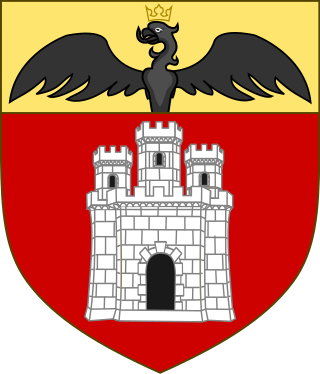
Giovanni Giustiniani Longo was a Genoese nobleman, captain, and defender of Constantinople during its siege in 1453. He was instrumental in its defense and commanded 700 men, as well as leading the land forces protecting the city.

Marchese Vincenzo Giustiniani was an aristocratic Italian banker, art collector and intellectual of the late 16th and early 17th centuries, known today largely for the Giustiniani art collection, assembled at the Palazzo Giustiniani, near the Pantheon, in Rome, and at the family palazzo at Bassano by Vincenzo and his brother, Cardinal Benedetto, and for his patronage of the artist Caravaggio.
Leonard of Chios was a Greek scholar of the Dominican Order and Latin Archbishop of Mytilene, best known for his eye-witness account of the Fall of Constantinople in 1453, which is one of the main sources for the event.
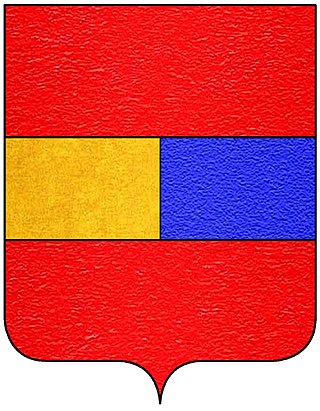
Balbi is the surname of the ancient noble Roman Family of Balbi where after the fall of the Western part of the Roman Empire and during the middle ages expanded in Venice, Genoa, Constantinople, Greece, Spain, Germany, Malta and other places. Balbi is one of the few surnames that has remained unchanged over the centuries and was one of the most famous prominent and wealthy families in Italy. Members of the Balbi family held high rank positions and noble titles such as Patrician, Senators, Dukes, Doge, Barons, Marchese, Lords e.t.c in the Maritime Republics of Venice and Genoa, the Eastern Roman and Holy Roman Empire of the German Nation, enganed in piracy, maritime trade, stock market and war activities where acquired wealth and power. Later in history many Balbi's participated in historical events such as revolutions, battles or served as Generals, Members of Parliament and Prime Ministers in many countries.

Maona of Chios and Phocaea was a maona formed to exact taxes for the Republic of Genoa from the island of Chios and port of Phocaea. Genoa sold the rights to their taxes to the maona, which raised funds from its investors to buy galleys and eventually re-conquer Chios and Phocaea.
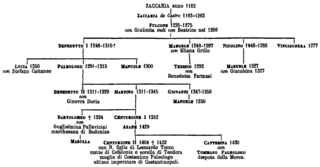
Benedetto I Zaccaria was an Italian admiral of the Republic of Genoa. He was the Lord of Phocaea and first Lord of Chios, and the founder of Zaccaria fortunes in Byzantine and Latin Greece. He was, at different stages in his life, a diplomat, adventurer, mercenary, and statesman.
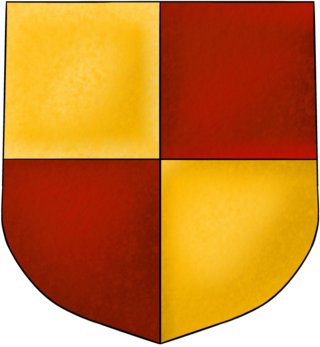
The Zaccaria family was an ancient and noble Genoese dynasty that had great importance in the development and consolidation of the Republic of Genoa in the thirteenth century and in the following period. The Zaccarias were characterized by, according to scholarly handwritten documents of the time, having broad intelligence and their effective way of maintaining political power through manipulation.
The Byzantine–Venetian War of 1296–1302 was an offshoot of the second Venetian–Genoese War of 1294–1299.

Marcantonio Giustinian was the 107th Doge of Venice, reigning from his election on 26 January 1684 until his death. Giustiniani was the quintessential Doge of the Republic of Venice, taking little interest in affairs of state. He had little role in the conduct of the Morean War (1684-1699), which was raging during his time as Doge, though a number of military victories were secured by provveditore Francesco Morosini, who would later be Giustinian's successor as Doge.

Agostino Giustiniani was an Italian Catholic bishop, linguist and geographer.
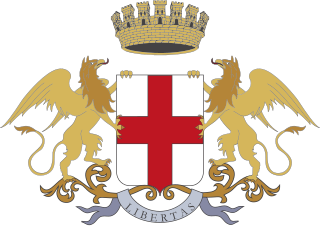
Pietro Campofregoso was Doge of Genoa from 1450 to 1458.

The Genoesecolonies were a series of economic and trade posts in the Mediterranean and Black Seas. Some of them had been established directly under the patronage of the republican authorities to support the economy of the local merchants, while others originated as feudal possessions of Genoese nobles, or had been founded by powerful private institutions, such as the Bank of Saint George.

Giovanni di Murta was elected the second Doge of the Republic of Genoa after the resignation of Simone Boccanegra, on 25 December 1345. His dogate was dominated by his attempts to break the circle of political violence which had crippled the city over the past century and to reassert Genoese dominion over the Mediterranean colonies.

The Genoese navy was the naval contingent of the Republic of Genoa's military. From the 11th century onward the Genoese navy protected the interests of the republic and projected its power throughout the Mediterranean and Black Seas. It played a crucial role in the history of the republic as a thalassocracy and a maritime trading power.
The Treaty of Gallipoli, concluded in January or early February 1403, was a peace treaty between Süleyman Çelebi, ruler of the Ottoman territories in the Balkans, and the main Christian regional powers: the Byzantine Empire, the Republic of Venice, the Republic of Genoa, the Knights Hospitaller, and the Duchy of Naxos. Concluded in the aftermath of the Battle of Ankara, while Süleyman tried to strengthen his own position in the succession struggle with his brothers, the treaty brought major concessions to the Christian states, especially the Byzantines, who regained lost territories and achieved a position of nominal superiority over the Ottoman ruler. Its provisions were honoured by Süleyman as well as by Mehmed I, the victor of the Ottoman succession struggle, but collapsed after Mehmed's death in 1421.
Andreolo Giustiniani was an antiquarian, humanist, literary patron, and writer of the Italian Renaissance.
This is an alphabetical index of people, places, things, and concepts related to or originating from the Republic of Venice. Feel free to add more, and create missing pages.














